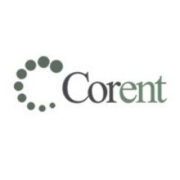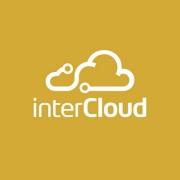PaaS Clouds offer application developers an environment to build, deploy, and manage applications without infrastructure complexity. These platforms streamline development with integrated tools and services.
PaaS Clouds empower developers by providing a suite of development tools, middleware, and cloud-based resources. They facilitate seamless deployment of applications, enhancing scalability and reducing the time-to-market. Users appreciate the ability to focus on application logic while the platform handles infrastructure management, contributing to efficient resource allocation and cost-effectiveness.
What are the key features of PaaS Clouds?In the financial industry, PaaS Clouds enable rapid development and deployment of applications essential for banking operations. Retailers use these platforms to scale e-commerce applications during peak shopping seasons, ensuring performance and reliability. The healthcare sector employs PaaS Clouds to develop applications with strong security measures for sensitive patient data.
PaaS Clouds are beneficial as they allow organizations to streamline application development processes. They minimize the need for in-house infrastructure management while accelerating innovation and improving time-to-market for new applications.
| Product | Market Share (%) |
|---|---|
| Microsoft Azure | 18.0% |
| Amazon AWS | 13.6% |
| Red Hat OpenShift | 11.6% |
| Other | 56.8% |

















































According to the IT Central Station (soon to be Peerspot) community, security is the most important criteria when selecting a Platform as a Service vendor (PaaS Cloud). PaaS clouds vary in the level of abstraction they provide their consumers. There are tradeoffs between efficiency and control over the application. Other key considerations are: the degree to which it will integrate seamlessly with the rest of the enterprise platform, the speed and resilience of internetworking, and the extent to which the platform is under control for configuration purposes. Read more »
The term aPaaS (application platform as a service) is often used interchangeably with PaaS. The subtle difference between the two is that PaaS, which provides a greater number of tools and services, refers to the entire spectrum of middleware as a service. aPaaS, on the other hand, encompasses only the tools that are used for application design, development, testing, deployment, management, and updating.
PaaS Clouds provide an array of pre-configured development tools, platforms, and frameworks that allow you to streamline your development process. They automate the underlying infrastructure management, letting you focus on coding and deployment. This means faster time-to-market and reduced complexity in setting up environments, handling testing stages, and scaling applications.
What are the security features of PaaS Clouds?PaaS Clouds offer robust security features such as identity management, encryption, and access controls. They often include built-in firewalls and automatic updates to protect your applications from vulnerabilities. You benefit from multi-layered security protocols that are maintained continuously, ensuring compliance with industry standards and regulations.
How can PaaS Clouds support multi-cloud strategies?PaaS Clouds are designed to be versatile, allowing you to integrate with other cloud services seamlessly. This flexibility enables you to build a strategy that takes advantage of the best features from multiple cloud providers. You can distribute workloads across clouds, optimizing costs, performance, and resilience to failure.
What are the cost benefits of using PaaS Clouds?With PaaS Clouds, you pay for only what you use, which can lead to significant savings compared to in-house hosting. They eliminate the costs associated with hardware procurement, maintenance, and software licensing. This pay-as-you-go model ensures cost-efficiency and scalability, making budget management easier.
How do PaaS Clouds enhance collaboration in development teams?PaaS Clouds facilitate enhanced collaboration by providing an integrated environment where team members can work simultaneously on the same project from different locations. With shared tools, real-time updates, and communication features, teams can coordinate more effectively, speeding up development cycles and improving productivity.